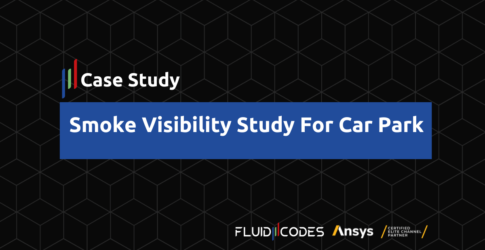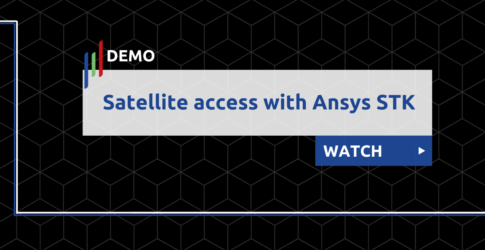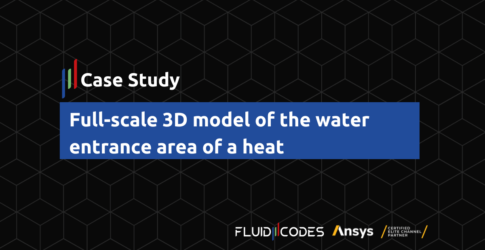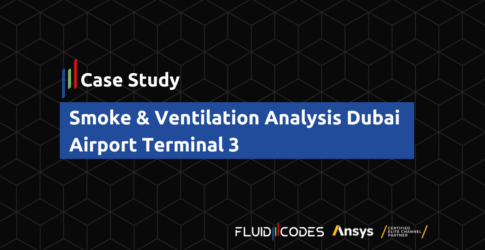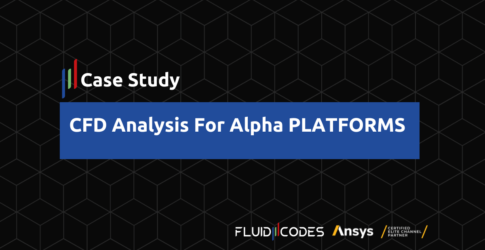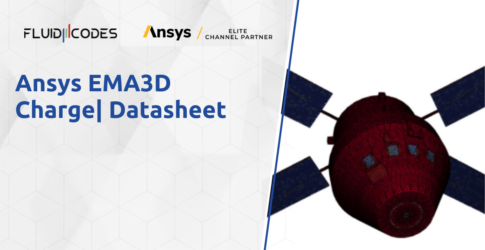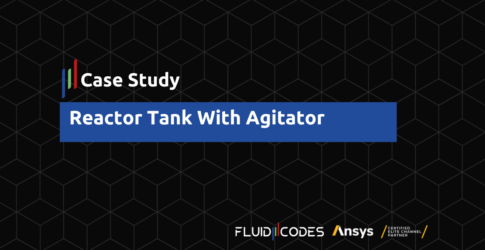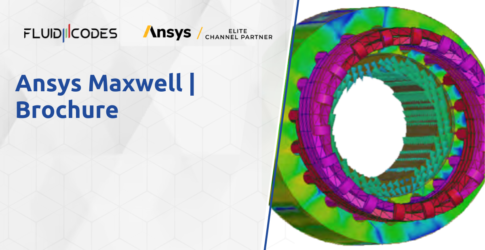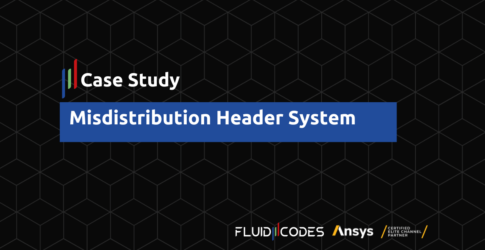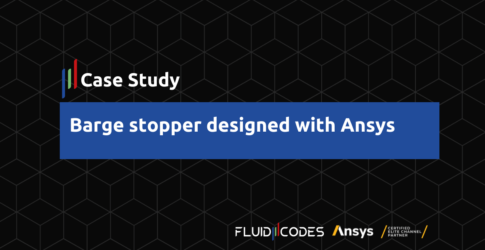Materials & Chemical Processing
Simulation solutions for the process industry is helping companies with significant engineering improvement in their asset- and process equipment efficiency and reliability. The required advancements can directly impact product and process performance, sustainable and green engineering, and ultimately corporate profitability.
From equipment and processes to chemical and petrochemical refining to glass and metals manufacturing, process-focused customers use ANSYS simulation solutions for the process industries to reduce overall costs, conserve energy, minimize environmental impacts, meet higher regulatory standards, and streamline product development and operations through a range of initiatives.
ANSYS solution set includes CFD for chemical process Industry, FEA for process industry and expand to cover electromagnetic and system design engineering concerns.
Combustion Systems
Reaction and combustion systems generate heat as an essential part of many processes. Improving heat generation operations along with related emissions control and performance efficiency are continual challenges to combustion engineers. ANSYS computational fluid dynamic (CFD) solutions are used across a wide range of applications, from gas turbines to flares and coal combustion to flameless combustion and low-Nox burners to oxy-fuel combustors, gasifiers and biomass furnaces. By coupling CFD with ANSYS structural solutions, engineers have access to a unified environment for evaluating the entire combustion system — including thermal stresses, vibration and fatigue.
Designers, analyst and researchers trust ANSYS engineering simulation for combustion systems. Most processes use various reaction and combustion systems to generate heat. Improving heat generation operations along with related emissions control and performance efficiency are continual challenges to combustion engineers. ANSYS computational fluid dynamic – CFD simulation for combustion systems solutions are used across a wide range of applications, from gas turbines to flares and coal combustion to flameless combustion and low-Nox burners to oxy-fuel combustors, gasifiers and biomass furnaces. By coupling CFD with ANSYS structural and vibration for combustion solutions, engineers have access to a unified environment for evaluating the entire combustion system — including thermal stresses, vibration and fatigue.
The study of combustion and related flow phenomena in reactors provides critical insights for retrofitting existing equipment as well as designing new processes. Engineering simulation for combustion systems from ANSYS provide combustion engineers with all the capabilities they need to increase system performance, understand pollution sources, develop strategies to reduce the overall carbon footprint, and control emissions from a wide range of fuel and combustion systems, covering gaseous, solid and liquid fuels from simple to complex reaction mechanisms.
Typically, the simulation of combustion equipment involves modeling and assessing fluid flows — including reaction, radiation and thermal phenomena. Coal and other fuels are represented as a secondary phase and are fully coupled with fluid flows. ANSYS CFD for combustion systems enable the simulation of a broad range of particulate concentrations, from dilute flows to packed beds. Simulations provide local velocities, particulate concentrations and traces, composition of combustion gases, fuel conversion rates, temperatures, and other critical data. These insights enable combustion engineers to investigate operational issues such as local temperature peaks, combustion efficiency and mixing problems.
Special features in ANSYS CFD for emission reduction allow engineers to simulate additional combustion processes and characteristics. For example, pollutant formation, emission and mercury levels can be predicted using detailed chemistry and pollutant formation submodels. Similarly, specialized ANSYS tools can model and predict erosion rates and slag buildup rates in furnaces.
ANSYS engineering simulation for combustion systems have been used throughout the industry and are helping customers to overcome the following and many other combustion-related challenges:
- Improve burner configurations in industrial furnaces
- Reduce NOx emissions from petroleum refineries
- Investigate novel clean energy technologies
- Predict and improve CO emission rates
- Model and minimize thermal stresses in combustion equipment
- Reduce soot formation in furnaces
- Optimize flare stack designs
Gas-liquid Systems
The performance and structural integrity of gas–liquid systems can be greatly enhanced using ANSYS engineering simulation for gas liquid systems. Engineers trust ANSYS fluid mechanics software – CFD for multiphase flows – to model gas liquid systems with or without heat and mass transfer/reaction in a broad range of applications in which fluid and gases are transported or processed.
Changes in vessel design may necessitate geometrical changes to distributors, baffles, vessel walls, splitter plates, inlet and outlet locations, draft tubes, recirculation loops, manifolds, distribution plates, and other components. The task of gas–liquid process and vessel design is a particularly complex engineering challenge.
Engineers are also tasked with designing and improving gas–liquid contacting systems, which transfer mass, heat and momentum between phases subject to physical and chemical equilibrium. The challenge of the process equipment designer is to achieve appropriate transfer with minimal energy and capital investment. Examples of typical mass transfer devices are distillation, flashing, absorption, stripping, evaporation, humidification, dehumidification and spray drying.
ANSYS engineering simulation for gas liquid system can help engineers overcome these challenges through computational fluid dynamics (CFD) and structural analysis to account for thermal stresses, vibration, fatigue, reactor performance, distribution of gases or liquids for various components, and mechanical design. ANSYS structural mechanics simulation coupled for CFD for gas liquid handling devices enables engineers to study multiphase distribution, heat and mass transfer calculations, chemical kinetics and reaction of gas–liquid reactions as well as performed coupled calculation of vibration, thermal stresses, structural fatigue and flow induced vibration.
Applications for ANSYS software include:
- Design of plate columns, packed columns and bubble columns
- Loop reactor and bioreactor development
- Gas-in-liquid dispersion studies
- Emulsion design
- Foam analyses
- Surface aeration studies
- Droplet separation studies
- Mist eliminator design
- Impingement separation studies
Heat generation and heat transfer equipment
The generation and transfer of heat play a critical role in the materials and chemical processing industries and engineering simulation for heat generation and heat transfer equipment and helping engineers meet the increasing demand for more thermal efficient equipment. Chemical, petrochemical and refining engineers — as well as equipment designers — recognize that they need to understand and manage every BTU of available heat to maximize the performance of their processes, reduce energy use and optimize equipment and process yield. With the current emphasis on energy efficiency — and the growing pressure to improve margins in a difficult economy — heat generation and heat transfer are drawing more focus on process-based industries.
Whether customers are focused on understanding the transport of heat in fluids or solids, or studying more complex problems such as the heat generated during manufacturing processes, ANSYS engineering simulation for heat generation and heat transfer solutions help them to gain critical insight, and select the right design for the right application.
While the performance of industrial burners and furnaces is an obvious concern, process engineers today also focus on improvements in combustion chemistry, species reactions, thermal stresses and phase changes. Software from ANSYS including CFD for heat exchanger and structural and thermal design of heat generation equipment have the capability to model all aspects of heat generation and heat transfer, enabling engineers to leverage these insights to design new products and processes, improve throughputs and process efficiency, and reduce overall costs and environmental impacts
Heat transmission by conduction, convection and radiation in laminar or turbulent flows for fluids, such as steam, thermal liquids, liquid metals and non-Newtonian fluids, can be design and analyze and new concept can be developed using ANSYS engineering simulation for heat generation and heat transfer equipment. Using these solutions engineers can identify hot spots, associated thermal stresses, equipment design and process efficiencies, and other issues that affect system performance.
ANSYS CFD for heat exchanger design and Structural mechanics and thermal analysis software tools provide a well-established engineering platform to help improve the design and analysis of energy-saving concepts, equipment reliability, structural integrity and related efficiency gains through virtual prototyping in a broad range of heat transfer applications.
- Air-cooled heat exchangers
- Boilers
- Burners
- Chillers
- Condensers
- Dryers
- Evaporators
- Flares
- Heaters
- Heating and cooling tanks
- Ovens
- Plate type exchangers
- Reboilers
- Shell and tube heat exchangers
- Superheaters
Measurement and Control
Engineers focusing on measurement and control systems — including valves, flow meters, sensors, filters and pumps — face special challenges: They are tasked to ensure a perfect level of accuracy while working with complex systems and multiple physical effects
ANSYS Software engineering simulation for measurement and control systems can help these engineers to simulate the performance of many measurement and control systems — at an incredible level of detail. Related computational fluid dynamics – CFD for valve and flow meter design capabilities from ANSYS support these professionals as they model and assess structures and flows, working to create innovative measurement and control systems with applications in a wide range of industries.
Physical and thermal stresses, aperture sizes, flow volumes, multidirectional flow patterns and fluctuating pressures can all be modeled using ANSYS engineering simulation for flow measurement and control and instrumentation tools in a dynamic simulation environment enables engineers to replicates real-world operating conditions. Software from ANSYS including CFD for valve and flow meter design, FEA simulation for measurement and control are used to model the acoustical effects of various measurement and control devices.
Powerful engineering simulation for measurement and control systems from ANSYS can help engineers to develop and improve all types of instrumentations and measurement and control devices.
Mixing
Advances in computational methods have brought science-based analysis to mixing design. Once considered more art than science, mixing today is an important unit process in many industries. Engineering simulation for material and chemical mixing Software from ANSYS can be applied as an integrated component of the computer-aided engineering process to help perform complete virtual prototyping, helping process equipment designers and mixing engineers to understand, predict and improve the performance of mixing equipment in diverse mixing applications. The efforts combine to increase product and process quality, enhance vessel performance, reduce waste, and drive down operating costs, as well as improve overall performance and product uniformity.
Today, a wide range of applications — including scaleup, solid suspension, heat transfer, reaction and fermentation — can be modeled using ANSYS engineering simulation for material and chemical mixing. The well-established CFD for mixing and FEA for structural design of mixing vessels as well as ability to model thermal and electromagnetic in an integrated multiphysics capabilities of the technology enable engineers to model many aspects of the structural mechanics of a mixer, including shaft vibration, upset conditions, structural forces, the design of gears and shafts, and power reduction, ANSYS electronic software is used for electromechanical applications, electronic components and control systems. Customized mixing simulation tools evaluate key mixing parameters — such as blending time, circulation and the power number in agitated mixing vessels — for any configuration of impellers, mixing conditions, shaft orientations and vessel geometries.
ANSYS is dedicated to helping engineers better understand mixing applications. This commitment has resulted in mixing-centric advancements, such as a mixing-specific intuitive graphical user interface, as well as a set of advanced models that account for particle dispersion, complex impeller rotations, the resolution of micro- and misso-mixing scales, complex rheology, and non-Newtonian fluid analyses for creeping or highly viscous flows.
Today, process engineers all over the world are using engineering simulations for material and chemical mixing from ANSYS to meet their varied mixing needs in a wide variety of applications.
- Blending
- Cell culture growth
- Crystallization
- Emulsion
- Fermentation
- Gas dispersion
- Gas sparging
- Glass-lined reactor systems
- High-shear mixers
- Hydrogenation
- Jet mixers
- Laminar mixing
- Liquid–liquid mixing
- Food mixing
- Mixing vessel design (for example, tank shape, impeller type, baffling level)
- Polymerization
- Residence time distribution
- Scaleup
- Solids suspension
- Static mixers
- Water treatment
Multi-Phase Systems
Many flows in nature and industry involve multiphases. By making a sustained, substantial investment in advanced technology development — and focusing on reliable, fundamentally sound physical model development — ANSYS has developed an impressive range of engineering simulation for multiphase flow system with comprehensive range of established modeling capabilities and the associated engineering experience to help researchers, process engineers and equipment designers to enhance the performance of complex multiphase systems. ANSYS provides an unparalleled depth of capabilities for modeling these systems, which include heat and mass transfer with or without reaction, including free surfaces, gas–liquid, gas–solid, boiling, cavitation, wet steams, flashing, slurries, and particulate systems.
Reflecting its commitment to this technology area, ANSYS CFD for multiphase flow modeling offers a number of unique capabilities tailored to multiphase modeling requirements. For example, ANSYS simulation tools allow engineers to model particle size distribution through population balance, combining detailed fluid mechanics analysis with a better description of the size distribution of particles, bubbles or droplets in a multiphase mixture. This approach accounts for phenomena such as nucleation, growth, dispersion, dissolution, aggregation and breakage. By employing ANSYS CFD for multiphase flow modeling software, engineers can describe and track changes in the particle population.
Fluid mechanics software can be applied as standalone CFD tools or in combination with ANSYS structural or electronic software in a multiphysics for multiphase flow simulation integrated workflow environment. ANSYS engineering simulation for multiphase flow system has a well-established track record of enhancing the performance of multiphase systems in a wide range of applications, including:
- Bag filters
- Bubble columns
- Centrifugal extractors
- Crystallization
- Cyclone separators
- Decanters
- Droplet separation
- Dust collection systems
- Emulsion
- Fluidized-bed catalytic cracking
- Fluidized-bed systems
- Foams
- Hydrocyclones
- Loop reactors
- Mist eliminators
- Mixers
- Packed columns
- Packed beds
- Particle size reduction systems
- Particulate systems
- Precipitators
- Scrubbers
- Sedimentation devices
- Sieve plates
- Solid suspensions
- Solid drying systems
- Surface aerators
Particulate Systems
Process industry companies, including metal and mining organizations, are driving energy reduction, sustainability and corporate profitability through innovation. Particulate systems are found in many applications involving physical and/or chemical transformations. Therefore, it is becoming more critical to understand how particles are produced and transported as well as how they move and interact with surrounding flows and equipment.
Numerical models of particulate systems have become an important tool in the design, operation and performance optimization of equipment and processes involving solid particles. Until recently, these applications required the construction and testing of physical prototypes — a difficult, expensive and time-consuming process.
Today, ANSYS engineering simulation for particulate systems help support enhancements to how equipment and processes are designed and optimized by enabling process engineers to model a range of systems, including gas-solid systems, fluid–solid systems and solid handling equipment. The technology has the power to create multiphysics, multi-component, multi-scale simulations that address a wide range of industrial engineering challenges.
Engineers can use ANSYS CFD modeling of particulate system, FEA for bulk particle handling equipment, to find engineering solutions for a range of applications from dilute to dense flows, including applications involving frictional flows, as well as matrix materials such as filled fibers, filled polymers and building materials. The engineering simulation for particulate systems technology covers both solid particles as well as droplets and bubbles.
Using a variety of advanced modeling techniques to study both continuous and particulate phases, software from ANSYS CFD for particulate systems and FEA for bulk particle handling equipment can reveal such critical information as
- Particle flows
- Particle size distribution
- Particle mechanics
- Surface and morphology
- Particle–particle interaction
- Turbulence and dispersion
- Geometry effects
- Erosion
- Material wear
- Particle attrition
- Homogeneous and hydrogenous reactions
- Cohesion
- Electrostatic effects
Pollution Control
Emissions and pollution from industrial processes are areas of intense global focus. Engineers today work on innovative ways to reduce, capture and control many undesirable byproducts. Process industry companies face dual challenges: to reduce environmental impact while creating better products that use less energy. Topics such as green engineering, clean air and water, sustainable design, and carbon reduction, and carbon capture have great environmental appeal — and they are at the heart of process engineering, as they drive process optimization and capital investment decisions.
Using a combination of Ansys engineering simulation for air pollution control analysis and design software solutions engineers and designers can simulate the combination of equipment and process parameters across a wide range of applications, for both new product design and retrofit/upgrade scenarios. For example, Ansys fluid mechanics solutions – CFD for air pollution control – provide insight and detailed understanding of the formation and dispersion of pollutants (Nox, Sox, mercury, other VOCs) throughout a range of flow problems, including turbulence, chemical reactions, heat and mass transfer, and multiphase flows.
ANSYS engineering simulation for pollution control software and services can be applied across the industry to pollution and emission reduction control systems, which includes:
- Scrubbers
- Absorbers
- Precipitators
- Burners
- Settling tanks
- Chlorine contact tanks
- Wastewater discharge equipment
- Catalytic converters
- Cyclones
- Ventilation devices
- SCRs
- SNCRs
Reactor Design
Because they represent the heart of a chemical plant — in which high-value products are produced through chemical transformation — reactors are a crucial component, and their high performance must be ensured. Reaction engineers are concerned with each reactor’s specific yield, selectivity, safety, environment, quality and purity — as well as the degree to which reactors support overall plant economic viability and optimal operational conditions.
Engineering simulation for reactor design software solution and services from ANSYS are powerful, reliable suite of tools that complements conventional reactor engineering practices. By bringing comprehensive multiphysics capabilities to reaction engineering, ANSYS has created a simulation platform that encompasses fluid mechanics, structural mechanics, impact and safety analyses, customized mixing tools, pressure vessel analysis, electromagnetic and control systems, and heat and mass transfer analyses. ANSYS solutions can model a diverse range of reactions, including gaseous and liquid, single-phase and multiphase, and homogenous and heterogeneous.
ANSYS engineering simulation for reactor design including CFD for chemical reactor design, structural and thermal analysis and instrumentation and control software used for design and analysis of chemical reactors enable reaction engineers to answer what-if questions as they design and enhance reactors performance, energy usage, reactor yield and product uniformity. Users can optimize reactor performance by better understanding the effects and impacts of feed locations, vessel geometries and internals, vibrations, failures, dead spots, shear rates, resident time distributions, hot spots, and particle size distributions.
ANSYS engineering simulation for reactor design software tools help a wide range of customers to simulate and improve a wide variety of reactors and reaction types.
- Stiff chemistry
- Competing and parallel reactions
- Catalytic reactions
- Heterogeneous and homogeneous reactions
- Surface and volumetric reactions
- Laminar and turbulent flows
- Single-phase and multiphase reactions
- Fluidized bed reactions
- Multi-tube reactors
- Membrane reactors
- Microreactors
- Stirred tank reactors
- Fixed reactors
- Autoclave reactors
- Emulsion
- Hydrogenation
- Chlorination
- Polymerization
- Hydrocracking
- Crystallization and precipitation
Separation, Filtration and Distillation
Separation, filtration and distillation technologies have a broad range of applications in the material, chemical and hydrocarbon processing and allied industries. Depending on the type and purpose of the process streams being treated, there are diverse devices and process strategies that can be considered. To help design and optimize separation equipment performance and increase device reliability, engineers around the world use ANSYS engineering simulation for separation and filtration systems solutions and services are combinations of well-established software capabilities developed for design and analysis of gas separators, gas–solid, liquid–solid and liquid–liquid separations; membrane; and filtration and distillation equipment design applications.
Engineering simulations supported by ANSYS engineering simulation for separation and filtration systems provide critical insight into the performance of equipment and devices, reducing physical testing and prototyping costs. As field testing is costly and often unreliable, regular operating data is difficult to achieve. Virtual prototyping with ANSYS simulation software complements and enhances the capabilities of designers, engineers and operators as they seek to optimize these treatment systems.
For example, ANSYS fluid mechanics simulation tools: CFD for separation and filtration includes modeling of transport of solid particle are used by diverse set of customers to understand and reduce erosion in solid separation and extraction devices. ANSYS structural mechanics software is widely used to design settling/storage tanks and to ensure structural integrity, fitness for service and global analysis. In filtration applications, ANSYS engineering simulation for separation and filtration systems, back by years of industry experience give engineers a clearer understanding of filtration technologies through in-depth studies of filter media, particle deposition and caking, pressure drop, throughput, back flushing, and mechanical design.
Below is a sample list of applications where ANSYS CFD for separation, filtration and distillation as well as the associate structure and thermal analysis are used in the material and chemical process industries.
- Centrifugal filters
- Chromatography
- Clarifiers
- Crystallization
- Cyclones
- Demisters
- Filter media
- Distillation trays and plates
- Electrostatic precipitators
- Extractors and screw-conveyors
- Flotation
- Hydrocyclones
- Granular bed filters
- Gravity separators
- Impingement/knockout
- Jet impactors
- Leaching
- Magnetic separators
- Membrane separation
- Packed beds
- Pressure filters
- Purifiers
- Sedimentation tanks
- Structured packing
- Sublimation
- Thickeners
- Ultrafilters




